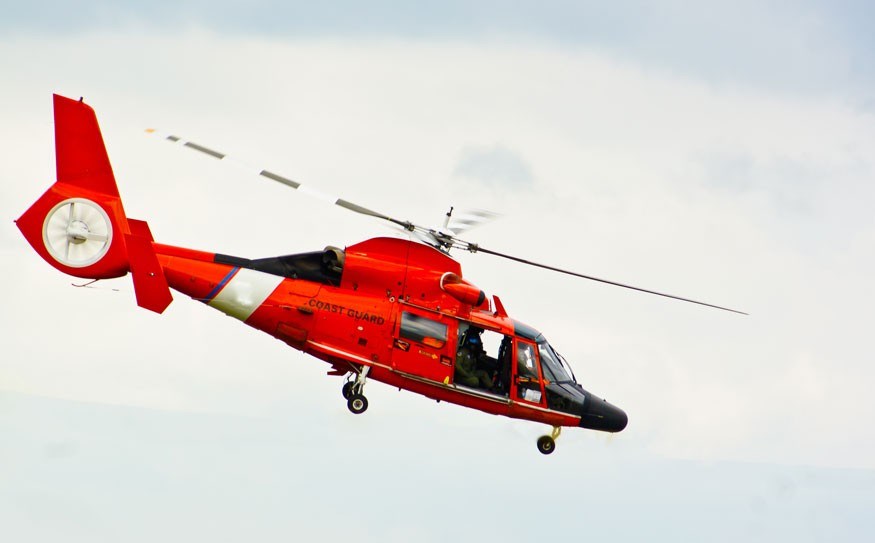The helipad at the Whistler Health Care Centre has become the stage for a bureaucratic farce that threatens to become a tragedy at any moment.
For the past couple of years the helipad has been closed more than it has been open, due to Transport Canada's strict enforcement of rules and Vancouver Coastal Health's glacial-speed approach to resolving the issue.
Transport Canada's position is that single-engine helicopters can't land at the Whistler Health Care Centre given the surrounding buildings, roads and trees and current approaches to the helipad. It may be difficult to understand Transport Canada's position, particularly given that single-engine helicopters have been landing there without incident for years and can still land at Squamish Hospital — which is surrounded by residential buildings — but that's their position.
The solution is to certify the health care centre's helipad for single-engine helicopters. That would require some surveying to set up flight paths, probably topping some trees and possibly some other work. It's Vancouver Coastal Health's responsibility to get it done, even if most of the work is on municipal property. But VCH says they need to see the "business case" for spending the money and doing the work.
Before we review that, let's look back on how we got to this bureaucratic paralysis.
The helipad and the Whistler Health Care Centre opened in the mid-90s, following a concerted fund-raising effort by the community. The helipad was used as needed to get the most seriously injured off the mountains, out of the backcountry or car crashes and to the centre where they could be stabilized. Most often single-engine helicopters were used because those are the aircraft best suited to mountain flying and used most often by the local helicopter companies.
In late 2009 Transport Canada told Vancouver Coastal Health the helipad at the health care centre had to be modified in order to meet the regulations for helicopters to land there. In addition, a number of trees in the day-skier lots had to be removed, light standards had to be lowered and people trained to stop traffic when helicopters were using the helipad.
It took Vancouver Coastal Health almost a year to notify Whistler of the changes that Transport Canada demanded.
The impetus for Transport Canada to stiffen regulations was likely the crash of a single-engine helicopter in Cranbrook in May 2008. In that case, a helicopter flying low over the city suddenly lost power, crashed and burst into flames. The pilot, two passengers onboard and a pedestrian on the street died. The jury in a coroner's inquest into the Cranbrook crash recommended in April 2011 that machines flying over cities have more than one engine.
Despite the late notice of Transport Canada's demands, just before the 2010-11 ski season was to begin, Whistler acted quickly to cut trees and put a plan in place that would have RCMP, Whistler Blackcomb staff and health care centre staff manage traffic around the helipad. Transport Canada then granted temporary permission for two-engine helicopters to land at the health care centre.
That temporary approval expired in April 2011 when the helipad was closed for further upgrades undertaken by Vancouver Coastal Health. The closure was supposed to be short and the upgrades were expected to cost about $600,000. In fact, the helipad remained closed for 15 months and the cost was closer to $1 million.
The helipad finally reopened last July, but only for twin-engine helicopters. Twin-engine choppers are used for rescues when they are available but, as mentioned earlier, single-engine machines are most common in Whistler. As well, Whistler Search and Rescue say twin-engine helicopters aren't as safe as single-engine aircraft for mountain rescues. In effect, using twin-engine helicopters may be putting Search and Rescue personnel at greater risk.
So for more than two years single-engine helicopters involved in rescues have been flying past the health care centre and landing at the municipal heliport, some 10 kilometres — and six traffic lights — north of the village. The ambulance service then brings the injured to the health care centre in a truck. This adds precious time — 20 minutes to as much as an hour — to the journey from a rescue evacuation to medical care at the clinic. Using the ambulance service also adds another leg to the relay of information going to the health care centre staff.
Whistler Search and Rescue has been lobbying VCH since last summer to take whatever steps are necessary to certify the health care centre helipad for single-engine helicopter landings. To little effect. VCH says it needs "hard evidence" and a "comprehensive list of the benefits" to support the work.
We realize there are lots of difficult decisions to make in a health care system where demands and costs keep rising. And some of those decisions come down to weighing value received for money spent.
This isn't one of them.
It's a fundamental expectation in Canada that everything within reason will be done to expedite a seriously injured or ill person to the health care they need. The end result — a person's health; in some cases their life — takes precedence over procedure or protocol.
Vancouver Coastal Health must take responsibility and initiate a solution to allow single-engine helicopters to land at the Whistler Health Care Centre.




